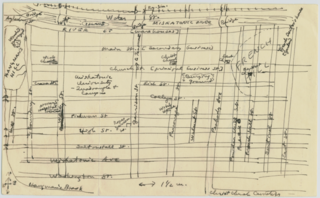
Arkham is a fictional city situated in Massachusetts, United States. An integral part of the Lovecraft Country setting created by H. P. Lovecraft, Arkham is featured in many of his stories and those of other Cthulhu Mythos writers.

"The Call of Cthulhu" is a short story by American writer H. P. Lovecraft. Written in the summer of 1926, it was first published in the pulp magazine Weird Tales in February 1928.
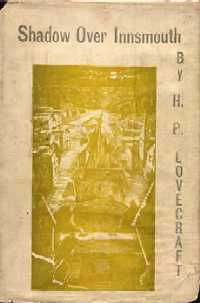
The Shadow over Innsmouth is a horror novella by American author H. P. Lovecraft, written in November–December 1931. It forms part of the Cthulhu Mythos, using its motif of a malign undersea civilization, and references several shared elements of the Mythos, including place-names, mythical creatures, and invocations. The Shadow over Innsmouth is the only Lovecraft story that was published in book form during his lifetime.

Lovecraftian horror, also called cosmic horror or eldritch horror, is a subgenre of horror, fantasy fiction and weird fiction that emphasizes the horror of the unknowable and incomprehensible more than gore or other elements of shock. It is named after American author H. P. Lovecraft (1890–1937). His work emphasizes themes of cosmic dread, forbidden and dangerous knowledge, madness, non-human influences on humanity, religion and superstition, fate and inevitability, and the risks associated with scientific discoveries, which are now associated with Lovecraftian horror as a subgenre. The cosmic themes of Lovecraftian horror can also be found in other media, notably horror films, horror games, and comics.
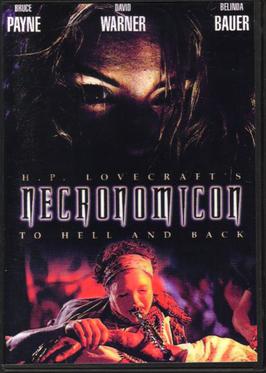
Necronomicon is a 1993 anthology horror film. It features three distinct segments and a wraparound directed by Brian Yuzna, Christophe Gans and Shusuke Kaneko and written by Gans, Yuzna, Brent V. Friedman and Kazunori Itō. The film's ensemble cast includes stars Jeffrey Combs, Bruce Payne, Richard Lynch, Belinda Bauer, Maria Ford, Dennis Christopher, Gary Graham and David Warner. The extensive special makeup and animatronic effects were supervised by Tom Savini and were created by John Carl Buechler, Christopher Nelson and Screaming Mad George.
The Xothic legend cycle is a series of short stories by American writer Lin Carter that are based on the Cthulhu Mythos of H. P. Lovecraft, primarily on Lovecraft's stories "The Call of Cthulhu" and "Out of the Aeons".
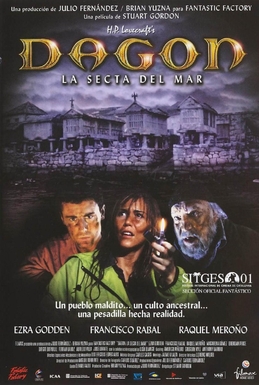
Dagon is a 2001 Spanish horror film directed by Stuart Gordon and written by Dennis Paoli. It is loosely based on H. P. Lovecraft's short story Dagon (1919) and his 1936 novella The Shadow Over Innsmouth. The film takes place in "Imboca", a Spanish adaptation of "Innsmouth". The film marked the last role of Francisco Rabal who died two months before its release.
A Shoggoth on the Roof is a parody of the 1964 musical Fiddler on the Roof based on the works of H. P. Lovecraft. Published by the H. P. Lovecraft Historical Society, it is credited to a member of the society who is referred to only as "He Who Must Not Be Named".

The Call of Cthulhu is a 2005 independent silent horror film adaptation of the H. P. Lovecraft short story "The Call of Cthulhu", produced by Sean Branney and Andrew Leman and distributed by the H. P. Lovecraft Historical Society. It is the first film adaptation of the famous Lovecraft story, and uses Mythoscope, a blend of vintage and modern filming techniques intended to produce the look of a 1920s-era film. The film is the length of a featurette.

"The Thing on the Doorstep" is a horror short story by American writer H. P. Lovecraft, part of the Cthulhu Mythos universe. It was written in August 1933 and first published in the January 1937 issue of Weird Tales.

The Lurker at the Threshold is a horror novel by American writer August Derleth, based on short fragments written by H. P. Lovecraft, who died in 1937, and published as a collaboration between the two authors. According to S. T. Joshi, of the novel's 50,000 words, 1,200 were written by Lovecraft.

The Haunted Palace is a 1963 gothic fantasy horror film released by American International Pictures, starring Vincent Price, Lon Chaney Jr. and Debra Paget, in a story about a village held in the grip of a dead necromancer. Directed by Roger Corman, it is one of his series of eight films based largely on the works of American author Edgar Allan Poe.
A Cthulhu Mythos anthology is a type of short story collection that contains stories written in, or related to, the Cthulhu Mythos genre of horror fiction launched by H. P. Lovecraft. Such anthologies have helped to define and popularize the genre.
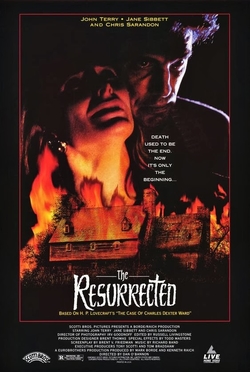
The Resurrected is a 1991 American horror film directed by Dan O'Bannon, and starring John Terry, Jane Sibbett, Chris Sarandon and Robert Romanus. It is an adaptation of the H. P. Lovecraft novella The Case of Charles Dexter Ward. Originally intended for a theatrical release, the film was shown at various film festivals before being released direct-to-video in 1992.
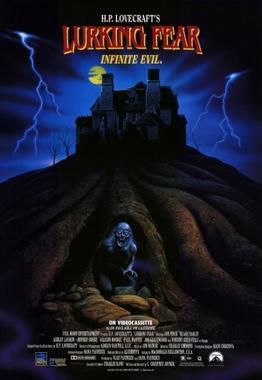
Lurking Fear is a 1994 horror film, loosely based on the H. P. Lovecraft short story "The Lurking Fear". It was produced by Charles Band's Full Moon Entertainment and written and directed by C. Courtney Joyner.
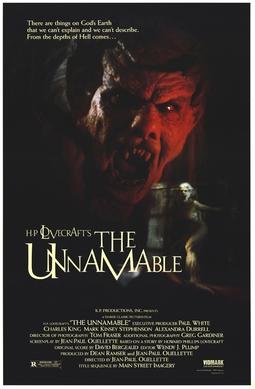
The Unnamable is a 1988 American horror film directed, written, and produced by Jean-Paul Ouellette. It is based on H. P. Lovecraft's short story of the same name. The film is about a group of university students that made the poor decision to stay overnight in a 'haunted house'. Mark Kinsey Stephenson played the lead role, Randolph Carter, alongside Charles King.
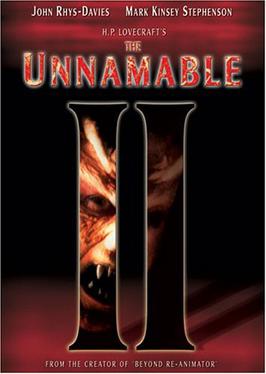
The Unnamable II: The Statement of Randolph Carter is a 1992 horror film directed Jean-Paul Ouellette. It incorporates elements from the short story "The Statement of Randolph Carter" by H.P. Lovecraft, and is a sequel to The Unnamable, which is loosely based on the short story of the same name, also by Lovecraft.

Trail of Cthulhu is an investigative horror role-playing game published by Pelgrane Press in 2008 in which the players' characters investigate mysterious events related to the Cthulhu Mythos. The game is a licensed product based on the horror role playing game Call of Cthulhu published by Chaosium, which is itself based on the writings of H. P. Lovecraft.

Arkham Unveiled, subtitled "Adventures and Background in the Home of Miskatonic University", is a supplement published by Chaosium in 1990 for the horror role-playing game Call of Cthulhu, which itself is base on the works of H.P. Lovecraft.














